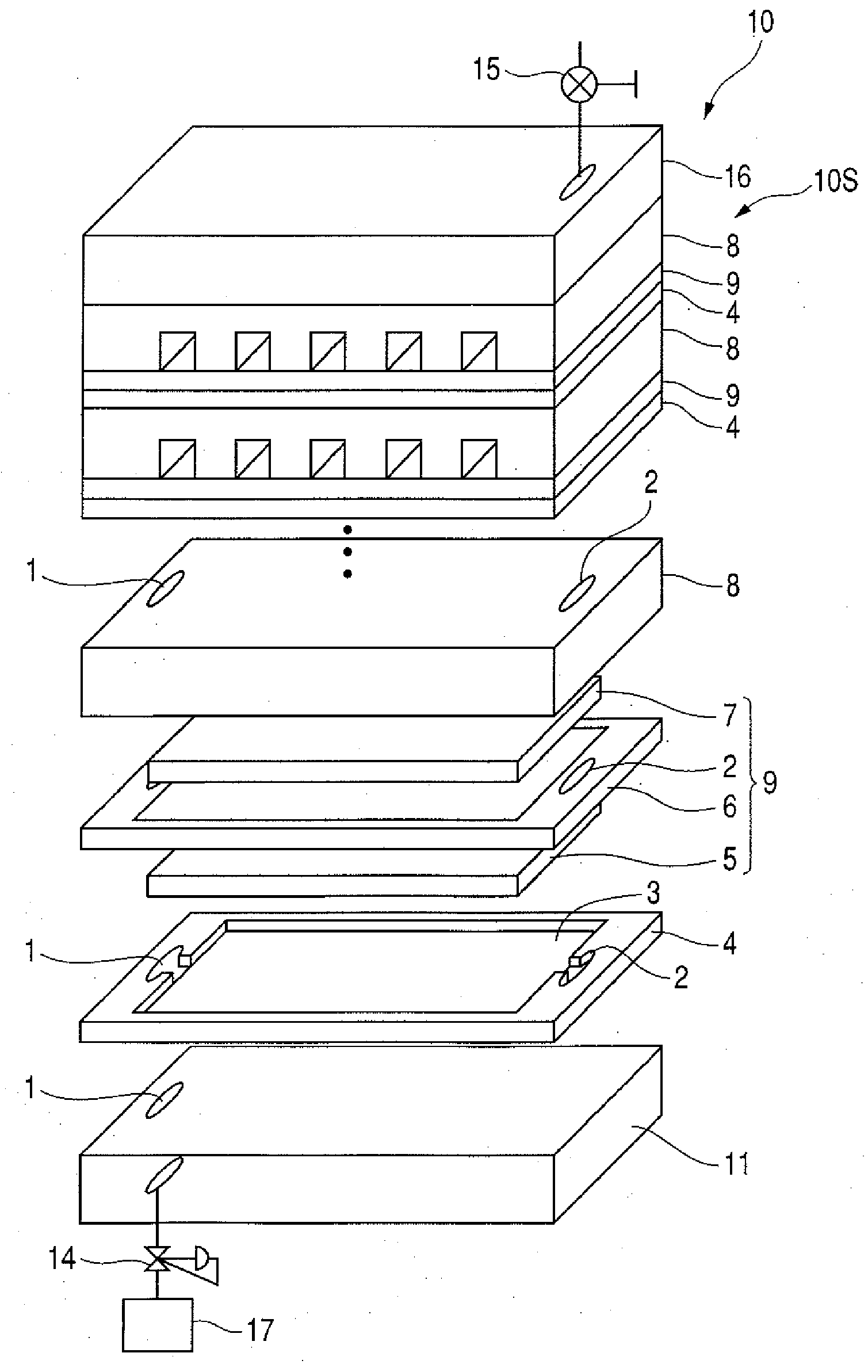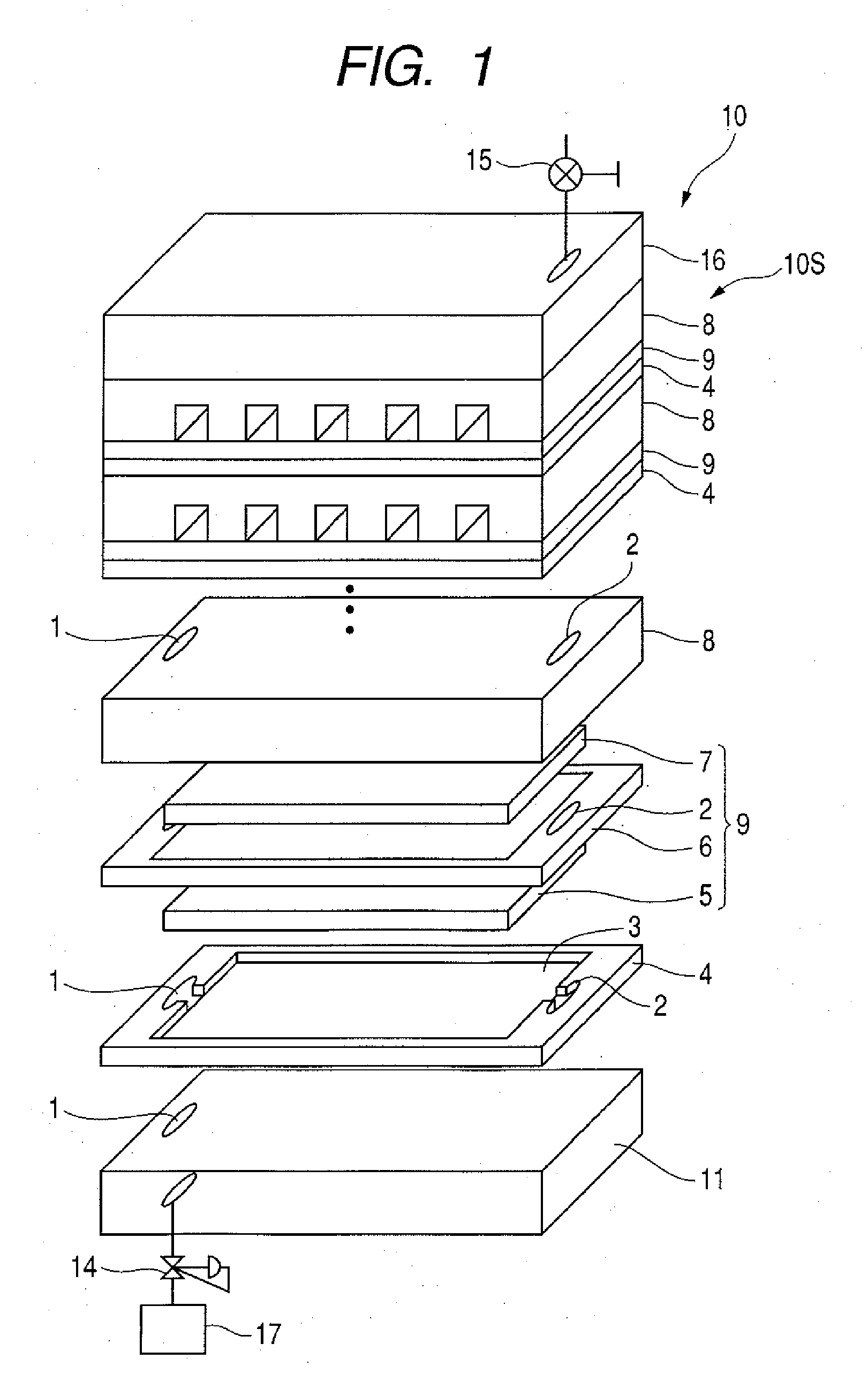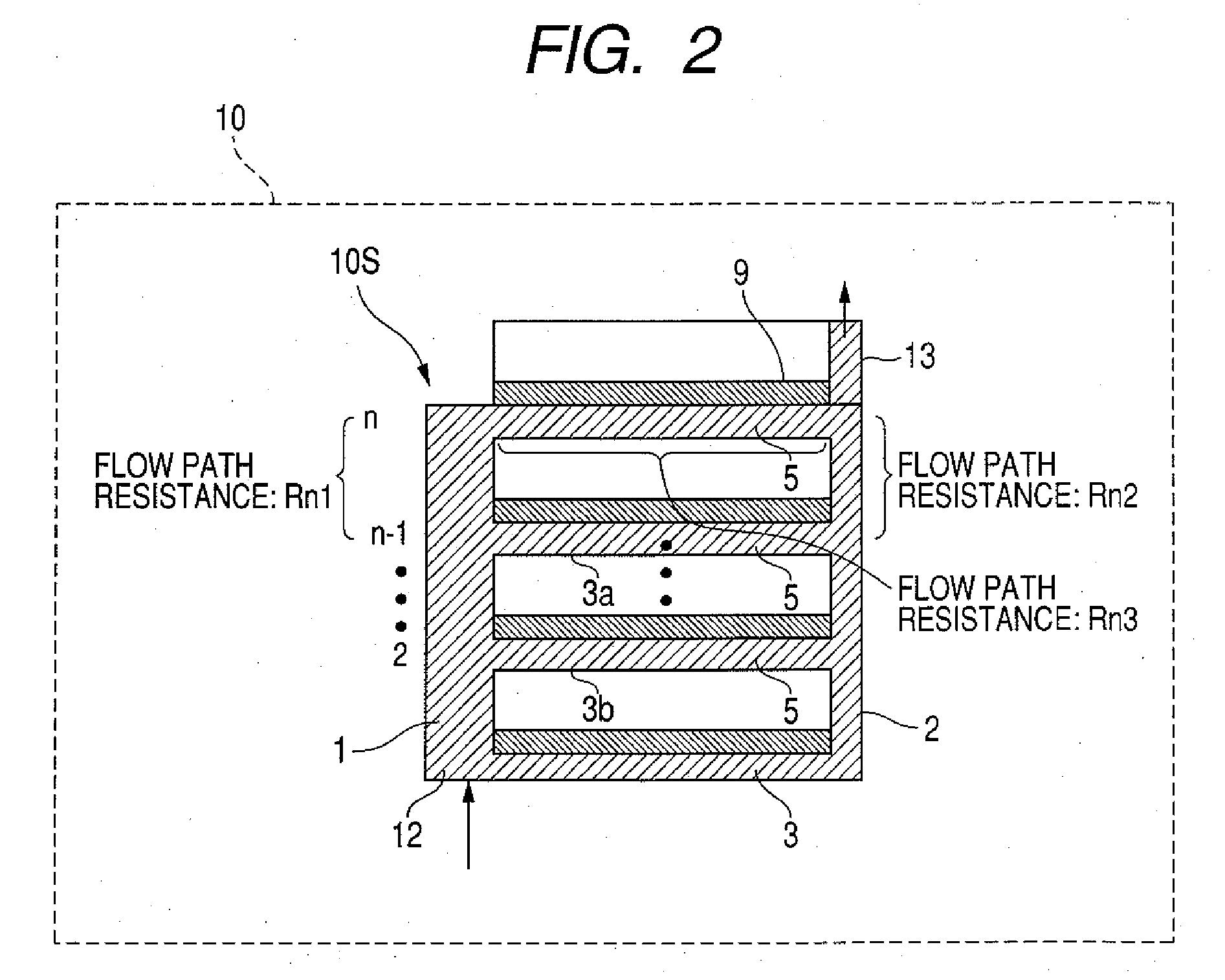Fuel cell system
a fuel cell and system technology, applied in the field of fuel cell systems, can solve the problems of limited amount of impurity gas that can be eliminated, insufficient hydrogen gas in the fuel space, and gradual increase of impurity gas such as moisture, nitrogen gas, or carbon dioxide in the sealed fuel diffusion space, and achieve the effect of expulsion of impurity gas
- Summary
- Abstract
- Description
- Claims
- Application Information
AI Technical Summary
Benefits of technology
Problems solved by technology
Method used
Image
Examples
embodiment 1
[0041]FIG. 1 is a perspective view illustrating the structure of a fuel cell system according to Embodiment 1; FIG. 2 is a schematic diagram of a flow path of hydrogen gas; FIG. 3 is a diagram illustrating a case in which the discharge of impurity gas is not sufficient; and FIG. 4 is a diagram illustrating water droplet discharge in a branch flow path.
[0042]As shown in FIG. 1, a fuel cell system 10 according to Embodiment 1 comprises a cell stack 10S in which a plurality of power generation cells 9 are stacked and serially connected. The power generation cells 9 are stacked in a state in which they are each interposed between a fuel electrode current connector 4 and an oxidizer electrode current collector 8, and are assembled by restraining all of the components in the stacking direction using pressure plates 11 and 16.
[0043]The power generation cell 9 has a fuel diffusion electrode 5 contacted with one surface of a membrane electrode assembly 6 and an oxygen diffusion electrode 7 c...
embodiment 2
[0072]FIG. 5 is a schematic diagram of a flow path of hydrogen gas in a fuel cell system 20 according to Embodiment 2, and FIG. 6 is a diagram illustrating a case in which the discharge of impurity gas is not sufficient. The fuel cell system 20 according to Embodiment 2 is configured in the same manner as in Embodiment 1 with the exception that the position of the outlet 13 in Embodiment 1 is changed to the same side (lower side) as the inlet 12. Accordingly, the elements which are the same as those shown in FIGS. 1 and 2 are identified by like numerals or symbols, and a detailed description thereof is omitted.
[0073]In the fuel cell system 20 of Embodiment 2, a through hole of the discharge-side main flow path 2 is formed in the pressure plate 11 shown in FIG. 1 to form an outlet 13A as shown in FIG. 5, and the purge valve 15 is connected to the discharge-side main flow path 2 (outlet 13A) of the pressure plate 11. Thereby, the structure that protrudes upward from the pressure plate...
embodiment 3
[0083]FIG. 7 is a perspective view illustrating the structure of a fuel cell system according to Embodiment 3, FIGS. 8A and 8B are schematic diagrams of a flow path of hydrogen gas, and FIG. 9 is a diagram illustrating a case in which the discharge of impurity gas is not sufficient. In the fuel cell system 30 according to Embodiment 3, the structure of the present invention is applied to a planar array fuel cell.
[0084]As shown in FIG. 7, a plurality of power generation cells 29 that are two-dimensionally arrayed are connected in parallel by a common fuel electrode current connector 24 and oxidizer electrode current collector 28 to extract the electrical power thereof in parallel. The power generation cell 29 has a fuel diffusion electrode 25 contacted with one surface of a membrane electrode assembly 26 and an oxygen diffusion electrode 27 contacted with the other surface thereof. The membrane electrode assembly 26 is constituted by disposing catalyst layers on both sides of a polym...
PUM
| Property | Measurement | Unit |
|---|---|---|
| diameter | aaaaa | aaaaa |
| diameter | aaaaa | aaaaa |
| depth | aaaaa | aaaaa |
Abstract
Description
Claims
Application Information
 Login to View More
Login to View More - R&D
- Intellectual Property
- Life Sciences
- Materials
- Tech Scout
- Unparalleled Data Quality
- Higher Quality Content
- 60% Fewer Hallucinations
Browse by: Latest US Patents, China's latest patents, Technical Efficacy Thesaurus, Application Domain, Technology Topic, Popular Technical Reports.
© 2025 PatSnap. All rights reserved.Legal|Privacy policy|Modern Slavery Act Transparency Statement|Sitemap|About US| Contact US: help@patsnap.com



